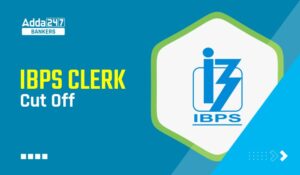Q1. The standard liquid ratio is
(a) 2:1
(b) 1:2
(c) 1:1
(d) 1:3
(e) 3:1
Q2. Accounting Ratios are important tools used by
(a) Managers
(b) Researchers
(c) Investors
(d) All of the above
(e) None of the above
Q3. To gain insight into what portion of the company’s assets is liquid, an analyst will most likelyuse:
(a) The cash ratio
(b) The Current ratio
(c) Common- Size balance sheet
(d) None of these
(e) Any of these
Q4. Demand for a good is most likely to be more elastic when:
(a) The good is a necessity
(b) A lesser proportion of income is spent on the good
(c) The adjustment to a price change takes a longer time
(d) None of these
(e) Any of these
Q5. Which of the following actions on the part of a central bank is most consistent with increasing the quantity of money?
(a) Increasing reserve requirements
(b) Selling securities on the open market
(c) Purchasing securities on the open market
(d) Increase Interest rate
(e) None of these
Q6. If a government increases its spending on domestically produced goods by an amount that is financed by the same increase in taxes, the aggregate demand will most likely:
(a) Increase
(b) Decrease
(c) Remain unchanged
(d) Any of these possible
(e) None of these
Q7. A country having a current account deficit most likely will still be able to consume more output than it produces by:
(a) Increasing its net foreign liabilities
(b) Restricting foreign direct investment
(c) Adjusting interest rates to stimulate higher domestic savings
(d) Any of these
(e) None of these
Q8. Net Profit Ratio Signifies:
(a) Operational Profitability
(b) Liquidity Position
(c) Big-term Solvency
(d) Profit for Lenders
(e) Short-term solvency
Q9. The IS curve illustrates which of the following relationships?
(a) Direct relationship between aggregate income and the price level
(b) Inverse relationship between aggregate income and the price level
(c) Inverse relationship between aggregate income and the real interest rate
(d) None of these
(e) Direct relationship between aggregate income and the real interest rate
Q10. The time it takes for the prices of some factors of production to adjust to changes in demand leads to an upward-sloping:
(a) long-run aggregate supply curve
(b) short-run aggregate supply curve
(c) very-short-run aggregate supply curve
(d) None of these
(e) Both a and b
Solutions
S1. Ans. (c)
Sol. The standard liquid ratio is 1:1. It means company has enough good liquidity on their hands.
S2. Ans. (d)
Sol. All of the above
Accounting Ratios are important tools which is used by Managers, Researchers, Investors to take their decisions for the further action.
S3. Ans. (c)
Sol. To gain insight into what portion of the company’s assets is liquid, an analyst will most likely use Common- Size balance sheet.
S4. Ans. (c)
Sol. Demand for a good is most likely to be more elastic when the adjustment to a price change takes a longer time.
S5. Ans. (c)
Sol. purchasing securities on the open market on the part of a central bank is most consistent with increasing the quantity of money.
S6. Ans. (a)
Sol. If a government increases its spending on domestically produced goods by an amount that is financed by the same increase in taxes, the aggregate demand will most likely to increase.
S7. Ans. (a)
Sol. A country having a current account deficit most likely will still be able to consume more output than it produces by increasing its net foreign liabilities.
S8. Ans. (a)
Sol. Net Profit Ratio Signifies as Operational Profitability improves.
S9. Ans. (c)
Sol. The IS curve illustrates inverse relationship between aggregate income and the real interest rate.
S10. Ans. (b)
Sol. Short-run aggregate supply curve takes for the prices of some factors of production to adjust to changes in demand leads to an upward-sloping.





 GA Capsule for SBI Clerk Mains 2025, Dow...
GA Capsule for SBI Clerk Mains 2025, Dow...
 The Hindu Review October 2022: Download ...
The Hindu Review October 2022: Download ...
 IBPS Clerk Mains Cut Off 2025, Check Sta...
IBPS Clerk Mains Cut Off 2025, Check Sta...







